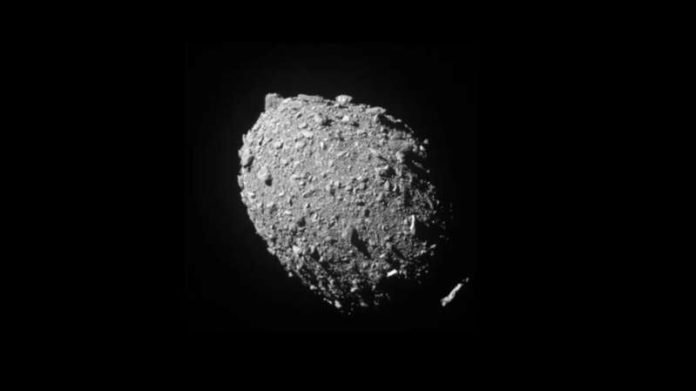
NASA’s pioneering Double Asteroid Redirection Test (DART) mission has significantly altered the orbit and shape of the asteroid Dimorphos, demonstrating the feasibility of kinetic impact as a method to deflect hazardous asteroids.
This historic event took place on September 26, 2022, marking a monumental step in planetary defense strategies.
The impact of the DART spacecraft on Dimorphos, which is approximately 560 feet (170 meters) wide and orbits the larger near-Earth asteroid Didymos, resulted in a shorter orbital period and transformed its shape from a relatively symmetrical oblate spheroid to a more elongated “triaxial ellipsoid,” akin to an oblong watermelon.
Before the impact, Dimorphos had a circular orbit around Didymos, completing one loop in 11 hours and 55 minutes.
Post-impact, its orbit was reduced by 33 minutes and 15 seconds, now taking 11 hours, 22 minutes, and 3 seconds to complete.
This transformation was meticulously analyzed using three key data sources: images captured by the DART spacecraft itself, radar observations from the Goldstone Solar System Radar, and ground-based telescope measurements of the asteroids’ light curves.
These combined observations revealed not only the change in Dimorphos’ orbital period and shape but also provided insights into its “rubble pile” composition, similar to asteroid Bennu.
The significance of this mission extends beyond the successful demonstration of asteroid deflection. It offers a new understanding of asteroid behavior and composition, setting the stage for future planetary defense efforts.
The European Space Agency’s Hera mission, set to launch in October 2024, will further investigate the aftermath of the DART impact, providing a detailed survey of the asteroid pair and confirming the extent to which DART has reshaped Dimorphos.
DART’s achievements underscore the importance of continued research and development in the field of planetary defense, offering hope that future threats from hazardous asteroids can be effectively mitigated through similar kinetic impact missions.
The research findings can be found in The Planetary Science Journal.
Copyright © 2024 Knowridge Science Report. All rights reserved.



